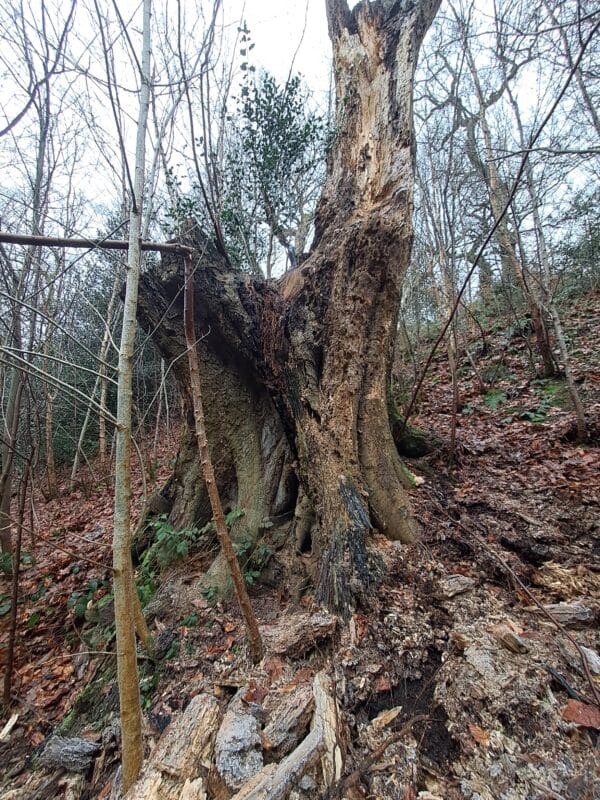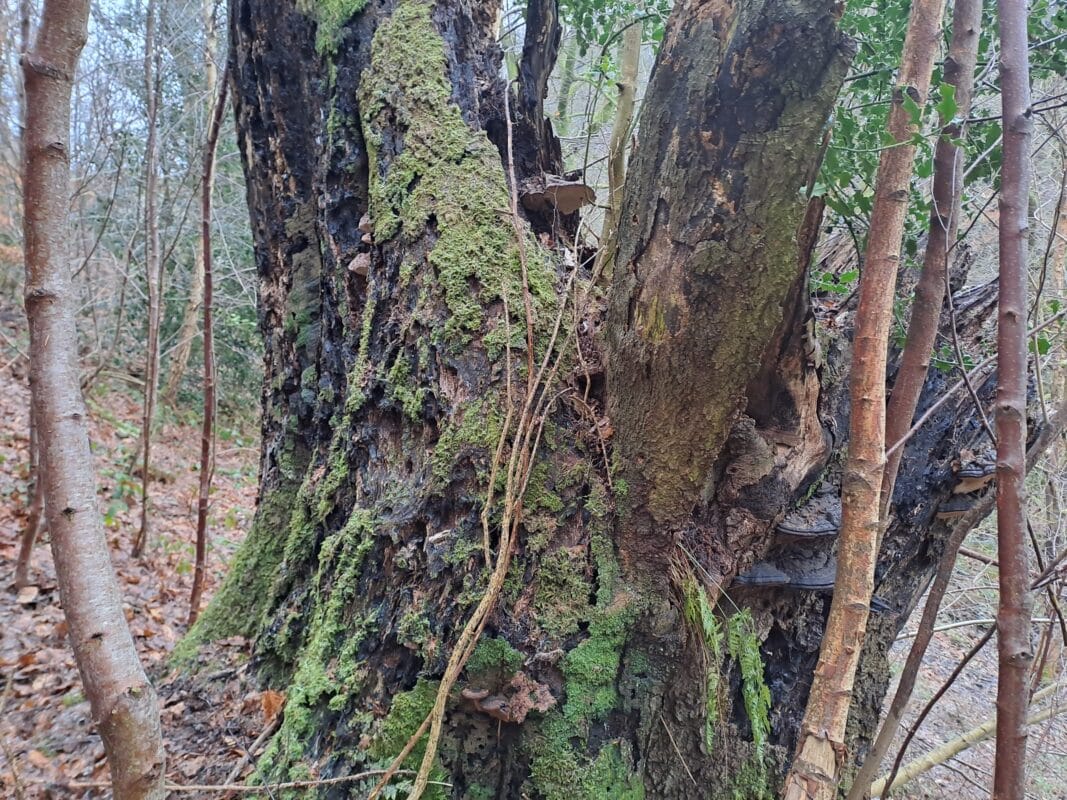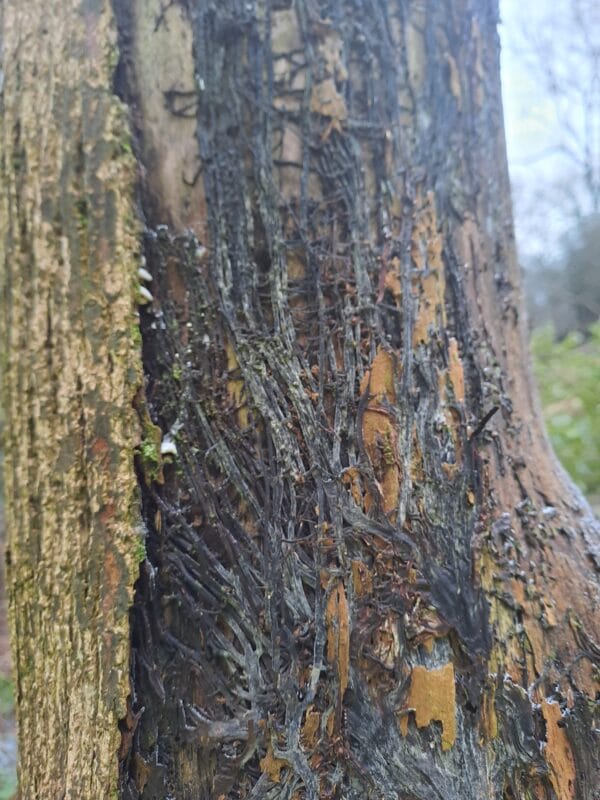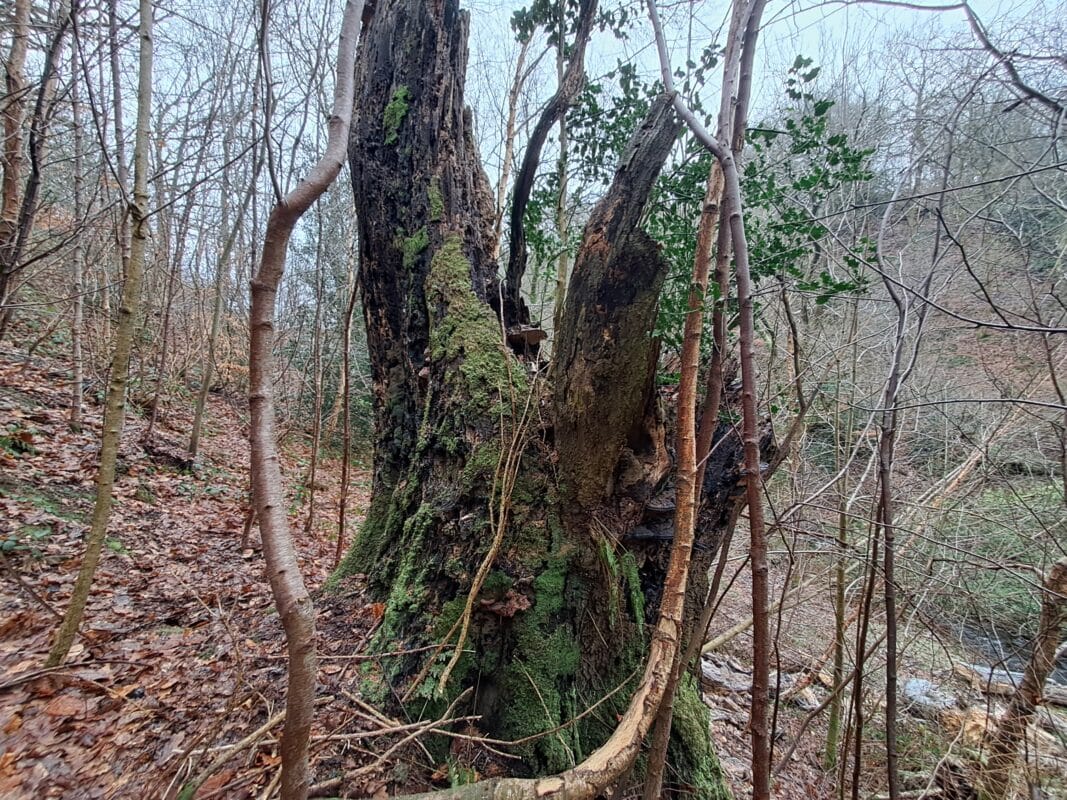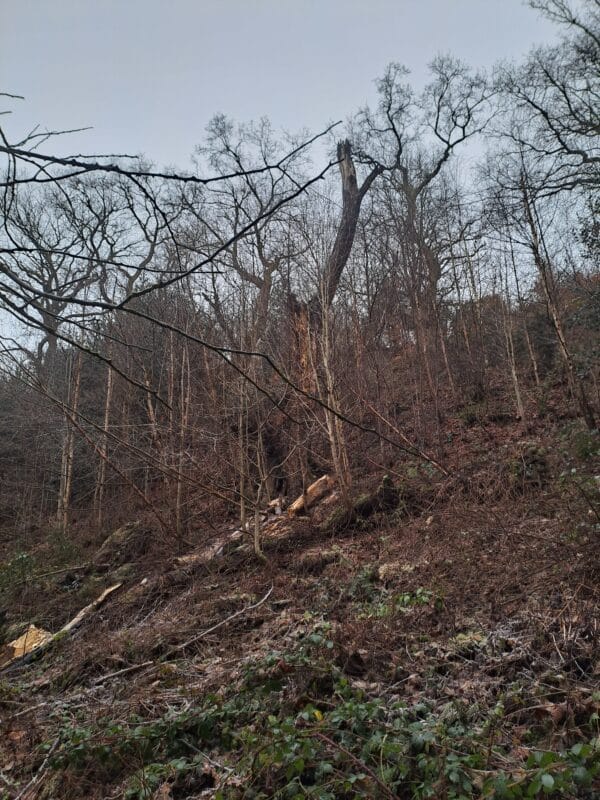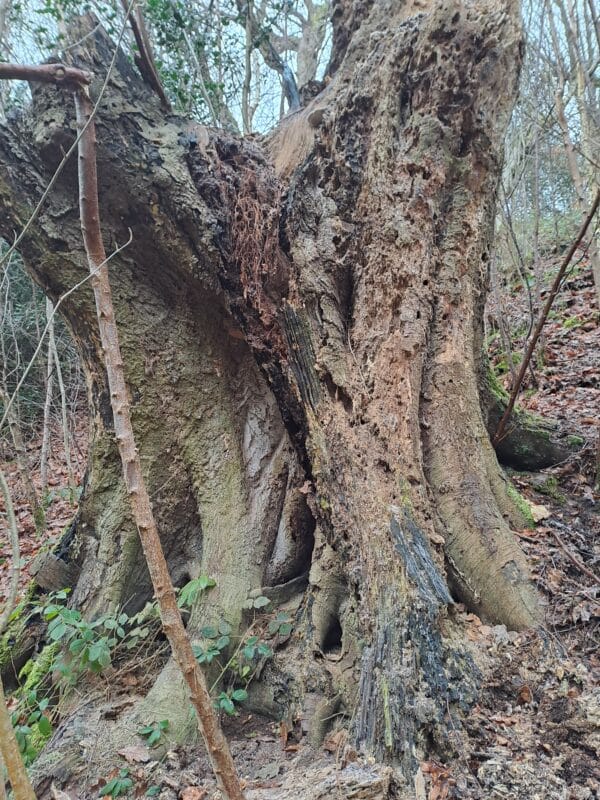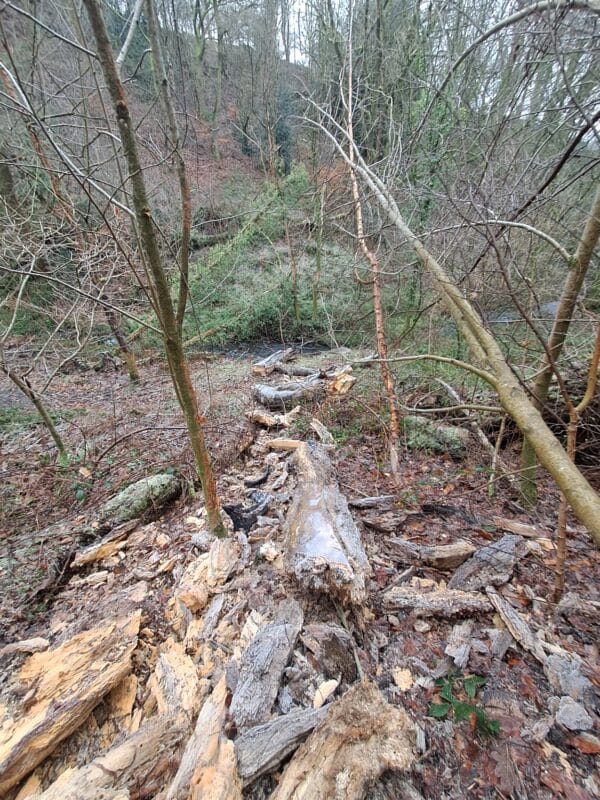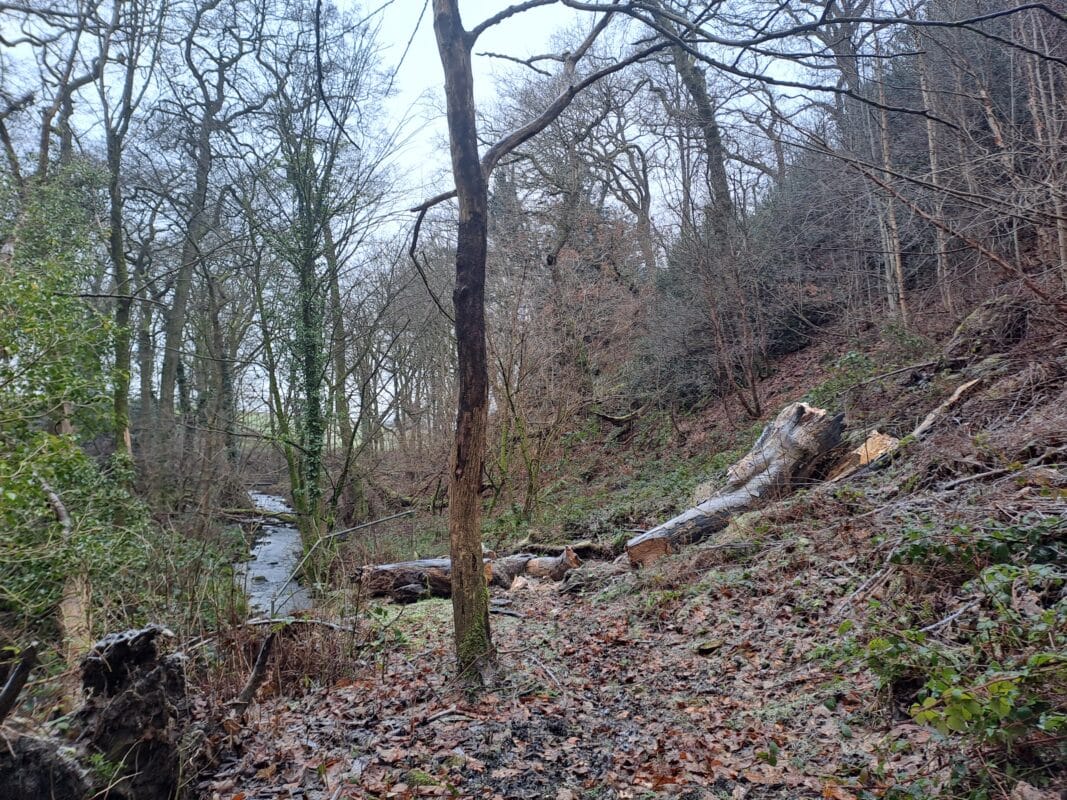
Our Arboriculture team has been out and about in East Cheshire conducting a BS5837 tree survey as part of improvement works on public infrastructure. During the survey, the surveyor noticed a distinctive mushroom smell, a tell-tale sign of honey fungus (Armillaria) a parasitic fungus that can affect a broad range of woody and perennial plants. On closer inspection of trees in the area, we found distinctive “bootlace” Armillaria rhizomorphs covering the internal bark of several trees and decaying wood on the woodland floor.
Many of the trees were in decline or already dead, with one particularly large common beech tree having succumbed to advanced decay, and also had several fruiting bodies of bracket fungus (Ganoderma sp.). This recently deceased tree had left a significant gap in the canopy, giving some indication of how large this tree would have been in its prime.
While the woodland is private and not accessible to the public, the large decaying trees and fallen wood pose little risk and can be left to contribute to the natural cycle of growth and decay, adding vital nutrients to the soil and supporting biodiversity.
Although a pathogenic fungus, Armillaria is a native species that forms part of this cycle within woodland. Our recommendations included selective removal work where necessary.
